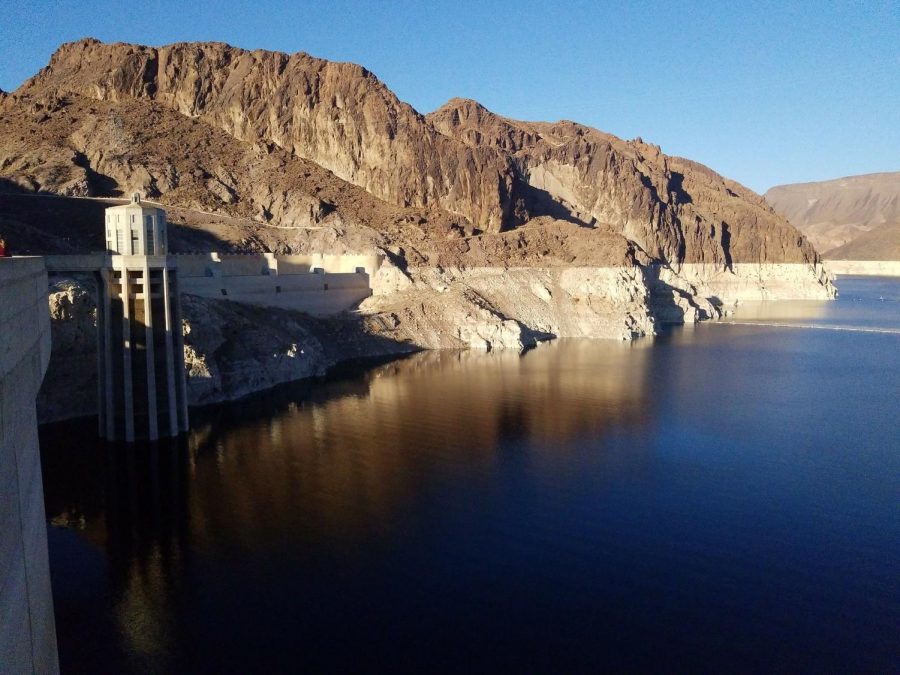Level 1 water shortage declared on Colorado River, rationing to primarily affect farmers in Pinal County, Ariz.
A 2020 photo of the front of Hoover Dam which forms Lake Mead
August 18, 2021
Monday, a level 1 water shortage was declared on the Colorado River.
It is the first time that such an action has been taken.
Years of drought conditions and lower than normal snow melt from the mountains that feed the river have left two of the system’s largest reservoirs at historically low levels.
Lake Mead, near Las Vegas, is nearly 152 feet below full pool.
Lake Powell, in northern Arizona and southern Utah, is 31% full, 52 feet lower than last year at this time.
The Colorado River supplies drinking and irrigation water to seven states, including Arizona, as well as parts of Mexico, around 40 million people in all.
According to NPR, Arizona will lose more of their water allotment than the other states.
Even though Arizona gave up a portion of its share, along with California, Mexico and Nevada in a 2019 drought contingency plan, they will lose another 18% of their allotment. Technically, 512,000 acre-feet of water or enough for perhaps 1 million households a year. About 8% of Arizona’s total water usage.
According to a report by azfamily.com, the shortage will not necessarily affect residential users, but will be impactful on farmers in Pinal county.
The CEO of the Arizona Farm Bureau, Phillip Bradshaw said Pinal County farmers will lose access to nearly half of their agricultural water.
According to a 2018 study by University of Arizona, Pinal County accounted for 45% of Arizona’s cattle and calf sales, 42% of cotton and cottonseed sales, 39% of milk sales and 22% of various crop and hay sales at that time.
According to the same study, 25% of Arizona’s manufacturing jobs and one-third of manufacturing wages come from Pinal county.
Aside from several years of above average snowfall, experts say that water conservation efforts are the primary way to help avoid future rationing.
Repair leaky faucets and avoiding letting the water run while doing dishes, peeling and cleaning vegetables, or shaving and brushing your teeth.
Plant natural, drought resistant plants for landscaping instead of grass. Maintain lawns at a taller height of cut to maximize water retention.
Water only when necessary and during the morning and night to avoid undue evaporation.


